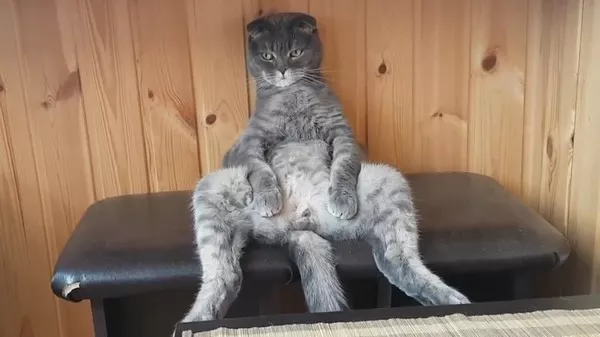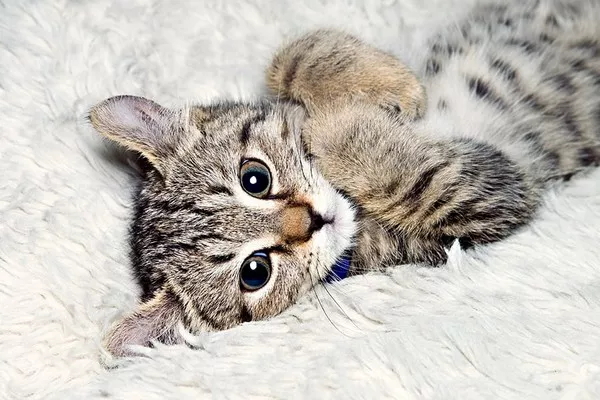The Egyptian Mau cat is renowned for its elegance, beauty, and extraordinary speed. Known as one of the fastest domestic cats in the world, the Egyptian Mau has captured the hearts of cat enthusiasts globally. This article delves into the various aspects that contribute to the incredible speed of the Egyptian Mau, including its physical characteristics, genetic factors, historical significance, and the implications of its speed for care and training.
The Anatomy of Speed
The Egyptian Mau’s impressive speed can be attributed to several unique physical traits. Understanding these characteristics provides insight into how this breed achieves such remarkable velocity.
Muscular Build
One of the key factors contributing to the Egyptian Mau’s speed is its muscular build. Unlike many other domestic cats, the Egyptian Mau has a well-defined, athletic physique. This muscular build provides the necessary power for quick bursts of speed and agile movements. The hind legs of the Egyptian Mau are particularly strong and slightly longer than the front legs, which gives them a greater stride length and enhances their running capability.
Skeletal Structure
The skeletal structure of the Egyptian Mau is another critical component of its speed. The breed has a unique bone structure that allows for flexibility and a wide range of motion. This flexibility is crucial for making rapid turns and changes in direction, which are essential for high-speed chases. Additionally, the cat’s spine is highly flexible, enabling it to extend its body fully when running, thereby increasing its stride length and speed.
Paws and Claws
The paws and claws of the Egyptian Mau are perfectly adapted for speed and agility. The paws are small and oval, providing a solid grip on various surfaces. The retractable claws add to this grip, allowing the Mau to maintain traction and control even at high speeds. This feature is particularly useful when the cat needs to make sudden stops or sharp turns while running.
Genetics and Evolution
The genetic makeup and evolutionary history of the Egyptian Mau play significant roles in its speed. This section explores how these factors contribute to the breed’s exceptional abilities.
Genetic Heritage
The Egyptian Mau’s genetic heritage is one of the primary reasons for its speed. This breed is believed to be one of the few naturally spotted domesticated cats, with a lineage that dates back to ancient Egypt. The genes responsible for its distinctive spots are also linked to its physical prowess. These genetic traits have been preserved and refined over generations, resulting in a breed that is both visually striking and athletically gifted.
Evolutionary Advantages
Throughout history, the Egyptian Mau has had to rely on its speed for survival. In the wild, speed is a critical factor for both hunting and evading predators. The evolutionary pressure to develop swift reflexes and rapid movement has shaped the Mau into the agile and fast cat it is today. This natural selection process has ensured that only the quickest and most agile cats survived, passing their traits on to future generations.
Selective Breeding
In modern times, selective breeding has further enhanced the speed and agility of the Egyptian Mau. Breeders have focused on maintaining the breed’s natural athleticism while also ensuring that other desirable traits, such as temperament and appearance, are preserved. This careful breeding process has helped to produce cats that are not only fast but also healthy and well-rounded in other aspects.
See Also: Is My Cat Part Egyptian Mau?
Historical Significance
The historical significance of the Egyptian Mau provides context for its development and the preservation of its unique traits. This section examines the breed’s origins and its role in human history.
Ancient Egypt
The Egyptian Mau’s roots can be traced back to ancient Egypt, where it was revered and often depicted in art and literature. These cats were not only valued for their beauty but also for their hunting skills. Their speed and agility made them effective at controlling rodent populations, which was essential for protecting food stores. As a result, the Egyptian Mau was considered a valuable companion and was often kept by royalty and other high-ranking individuals.
Symbolism and Worship
In ancient Egyptian culture, cats were associated with the goddess Bastet, who was the deity of home, fertility, and protector of the household. The speed and grace of the Egyptian Mau made it a symbol of power and agility. Cats were often mummified and buried with their owners, signifying their important role in society and the afterlife. This historical reverence has contributed to the preservation and admiration of the breed throughout the centuries.
Modern Resurgence
The modern resurgence of the Egyptian Mau can be attributed to dedicated breeders who have worked tirelessly to maintain the breed’s unique characteristics. In the mid-20th century, the breed was introduced to Europe and North America, where it gained popularity among cat enthusiasts. The efforts to preserve its lineage have ensured that the Egyptian Mau remains one of the most distinctive and admired cat breeds in the world.
Implications of Speed
The incredible speed of the Egyptian Mau has several implications for its care, training, and overall well-being. Understanding these implications is crucial for anyone considering this breed as a pet.
See Also: Egyptian Mau vs Tabby: What’s the Difference?
Exercise and Enrichment
Given their natural speed and agility, Egyptian Maus require ample exercise and mental stimulation to stay healthy and happy. Owners should provide opportunities for their cats to run, jump, and climb. Interactive toys, laser pointers, and puzzle feeders can help keep them engaged and physically active. Without proper exercise, these cats can become bored and may develop behavioral issues.
Training Techniques
Training an Egyptian Mau requires patience and consistency. These cats are highly intelligent and can be trained to perform various tricks and commands. Positive reinforcement techniques, such as treats and praise, work best with this breed. It is important to start training early and to be consistent with commands and rewards. Providing a variety of activities and challenges can help keep their minds sharp and prevent boredom.
Health Considerations
While the Egyptian Mau is generally a healthy breed, its high energy levels mean that regular veterinary check-ups are essential. Owners should monitor their cat’s weight and overall health, ensuring that they receive a balanced diet and adequate exercise. It is also important to watch for signs of joint or muscle strain, as their active lifestyle can sometimes lead to injuries.
Conclusion
The Egyptian Mau is a remarkable breed, known for its striking appearance and unparalleled speed. Its muscular build, flexible skeletal structure, and evolutionary history all contribute to its status as one of the fastest domestic cats in the world. From ancient Egypt to modern households, the Egyptian Mau has captivated people with its grace and agility. Understanding the factors that contribute to its speed, as well as the implications for care and training, can help ensure that these magnificent cats continue to thrive for generations to come.
Related Topics:


























